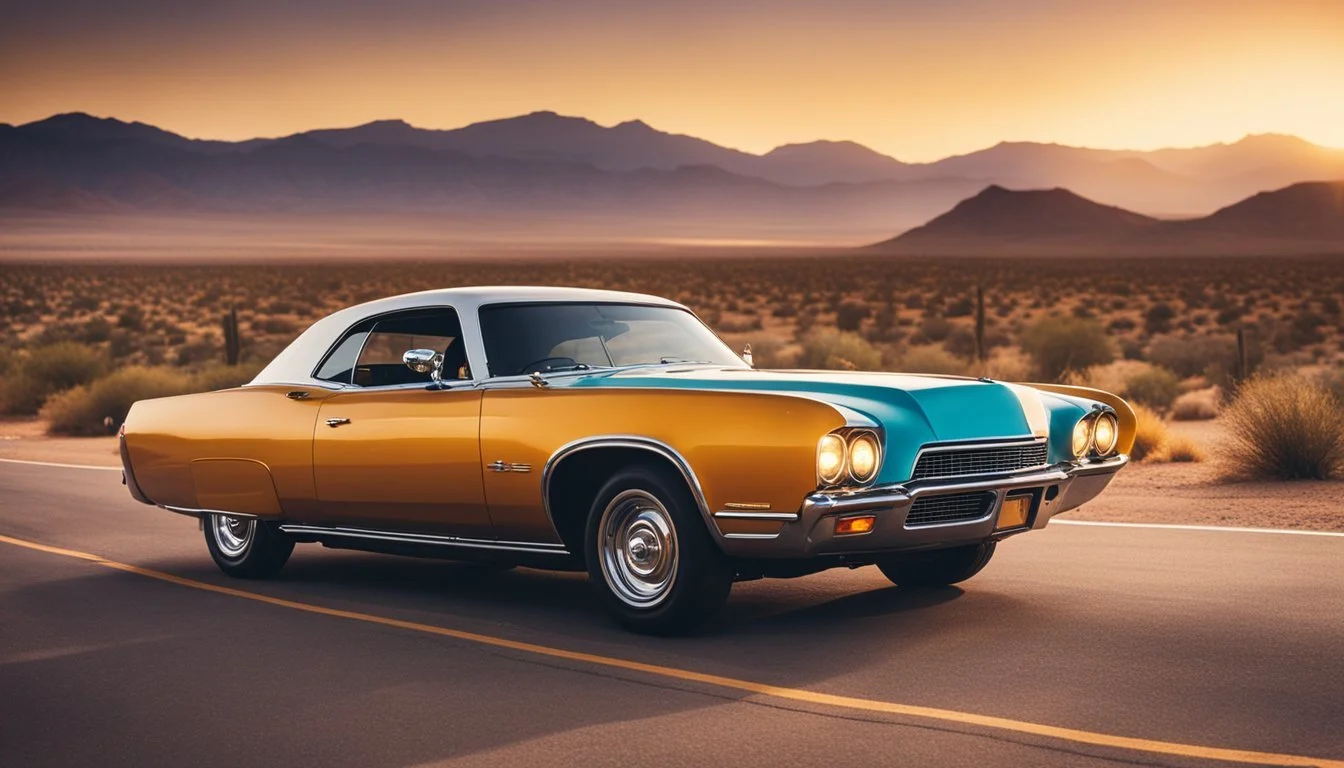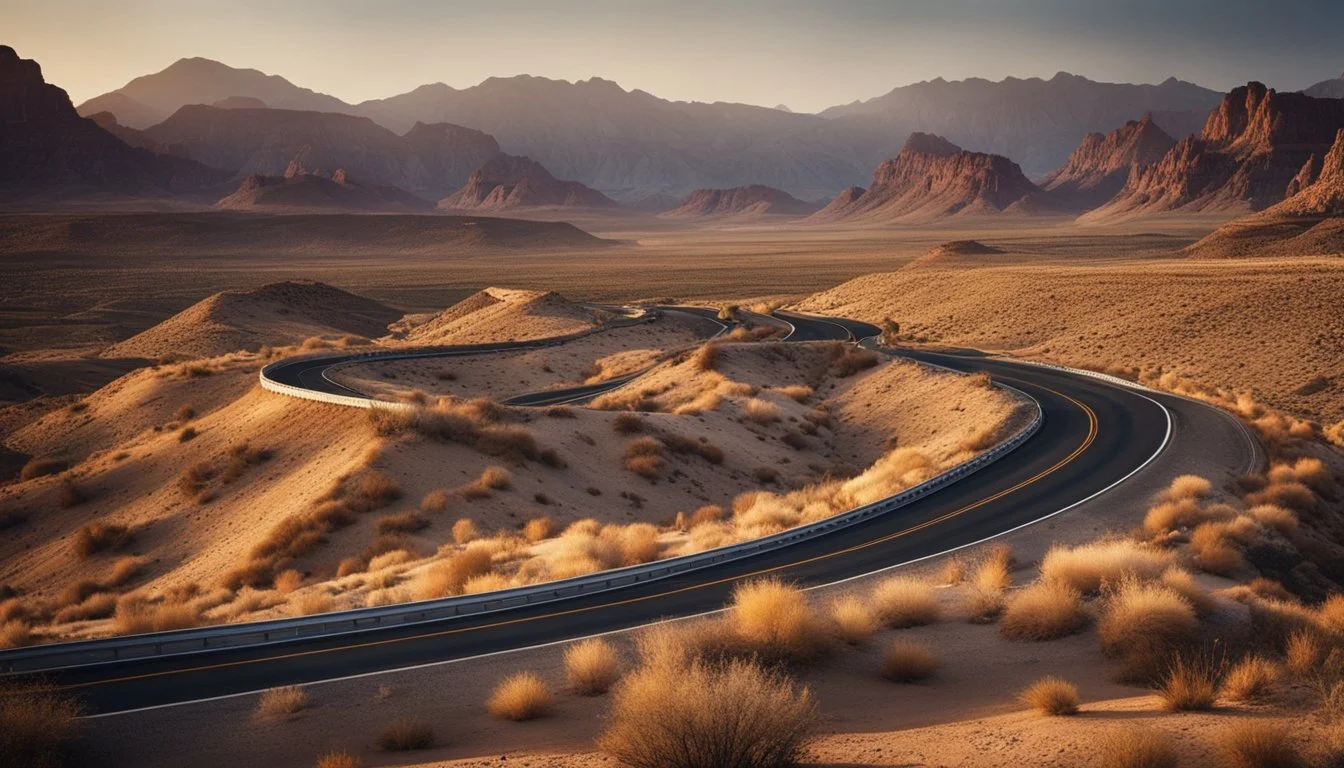9 Epic Road Trips Documented on Film
Unforgettable Journeys and Scenic Adventures
Road trips have long been a beloved narrative device in cinema, capturing the essence of adventure, self-discovery, and the evolving landscapes of a journey. Films documenting these road trips offer a rich tapestry of experiences, from scenic vistas to the profound changes in the characters themselves.
These movies not only entertain but also inspire viewers to embark on their own adventures. Highlighting various aspects of life on the road, these films bring to life the thrill of the open highway, the solace found in solitude, and the unexpected encounters that arise along the way.
1) "The Motorcycle Diaries" (2004)
"The Motorcycle Diaries" captures the journey of Ernesto Guevara de la Serna, known later as Che Guevara, and his friend Alberto Granado. The film, directed by Walter Salles, chronicles their 1952 road trip across South America on an old motorcycle.
Ernesto, a medical student, and Alberto, a biochemist, embark on this adventure to explore the continent and discover its diverse cultures. Their expedition takes them from Argentina to Peru, passing through various countries and landscapes.
As they travel, the pair visits iconic locations such as Machu Picchu and Lake Titicaca. These experiences play a crucial role in shaping Ernesto’s worldview and future revolutionary ideals.
Gael García Bernal stars as Ernesto Guevara, while Rodrigo de la Serna portrays Alberto Granado. The film received critical acclaim for its storytelling and the performances of its lead actors.
For more information on "The Motorcycle Diaries," you can visit IMDb.
2) "Easy Rider" (1969)
"Easy Rider" is a landmark in American independent filmmaking. Directed by Dennis Hopper, this 1969 road drama features Hopper and Peter Fonda as protagonists.
The film follows two bikers, Wyatt and Billy, as they journey from Los Angeles to New Orleans. Their trip is funded by the proceeds of a cocaine deal.
Along the way, they encounter various characters, including a memorable performance by Jack Nicholson. The journey takes them through the American Southwest and South, showcasing diverse landscapes.
"Easy Rider" captured the countercultural mood of the late 1960s. It addresses themes of freedom, societal norms, and the search for personal meaning.
The film's success was instrumental in sparking the New Hollywood era of filmmaking in the early 1970s. It remains a significant cultural touchstone.
For more information, visit Easy Rider on IMDB.
3) "Thelma & Louise" (1991)
"Thelma & Louise," released in 1991, is a landmark in the genre of road movies. Directed by Ridley Scott, the film stars Susan Sarandon and Geena Davis as two women embarking on an impromptu road trip.
The story follows Thelma, a housewife, and Louise, a waitress, as they break free from their mundane lives. Their trip quickly turns into a high-stakes adventure.
Driving a turquoise 1966 Thunderbird, they traverse the American Southwest. This iconic vehicle becomes a symbol of their quest for freedom.
The film is notable for its portrayal of female friendship and empowerment. It explores themes of liberation, defiance, and self-discovery.
Along their journey, they encounter various obstacles and characters, becoming accidental fugitives. Their bond deepens as they evade law enforcement.
"Thelma & Louise" has left a lasting impact on audiences and critics alike. It has been praised for its compelling narrative and strong performances.
For more information, visit the IMDB page for "Thelma & Louise" (1991).
4) "Into the Wild" (2007)
"Into the Wild" (2007) is an unforgettable journey into the American wilderness. Directed by Sean Penn, it narrates the true story of Christopher McCandless, a young man who abandons his conventional life.
With just a backpack, Christopher hitchhikes across North America. He gives away his savings and heads to Alaska in search of a raw, unfiltered experience.
Emile Hirsch stars as McCandless, delivering a powerful performance that captures the spirit of adventure. The film's cinematography beautifully portrays the vast landscapes of the United States.
"Into the Wild" is based on Jon Krakauer’s 1996 book. The film powerfully explores themes of freedom, self-discovery, and the consequences of living off the grid.
More information can be found on IMDb.
5) "Little Miss Sunshine" (2006)
"Little Miss Sunshine" (2006) follows the journey of the Hoover family, who are determined to get their young daughter, Olive, into the finals of a beauty pageant. The family embarks on a cross-country trip in their VW bus, each member bringing their unique quirks and personal challenges to the trip.
The film features an ensemble cast that includes Greg Kinnear, Toni Collette, Steve Carell, Paul Dano, Abigail Breslin, and Alan Arkin. Each character's story adds depth and humor to the road trip narrative, creating a memorable and touching portrayal of a dysfunctional yet loving family.
Directed by Jonathan Dayton and Valerie Faris, the movie mixes comedy with poignant moments. It was well-received for its charming storyline and the performances of its cast. Abigail Breslin, in particular, gained acclaim for her role as Olive.
For more information on "Little Miss Sunshine," visit Wikipedia or IMDb.
6) "On the Road" (2012)
"On the Road" (2012) is an adaptation of Jack Kerouac's 1957 novel. Directed by Walter Salles, the film stars Sam Riley, Garrett Hedlund, and Kristen Stewart.
The plot follows young writer Sal Paradise, who embarks on a road trip across the United States with his free-spirited friend Dean Moriarty and Dean's girlfriend, Marylou.
Throughout their travels, they encounter a diverse array of people and experiences that leave lasting impressions on their lives. This journey pushes Sal to explore new horizons and self-discoveries, marked by the era's beat counterculture.
Vividly capturing the essence of adventure and freedom, "On the Road" transports viewers to a time when the open road represented limitless possibilities.
For more information, visit IMDb.
7) "National Lampoon's Vacation" (1983)
"National Lampoon's Vacation" is an iconic comedy film that showcases the mishaps of the Griswold family's cross-country road trip. Directed by Harold Ramis and starring Chevy Chase, Beverly D'Angelo, and Randy Quaid, the film captures both the humor and chaos of family vacations.
Clark Griswold, the well-meaning but often bumbling patriarch, plans a trip from their Chicago home to the fictional Walley World amusement park in California. The journey is filled with unexpected events that test the family's patience and resolve.
The Griswolds travel in their distinctive Wagon Queen Family Truckster, a symbol of 1980s automotive excess. Along the way, they encounter various quirky characters, including the memorable Cousin Eddie, played by Randy Quaid.
Each setback and comedic disaster along the road serves to highlight both the frustrations and the bonding moments that families experience. "National Lampoon's Vacation" remains a beloved classic for its relatable humor and depiction of the trials and triumphs of family road trips.
More information on the film can be found on IMDb.
8) "Wild" (2014)
"Wild" (2014) documents the extraordinary journey of Cheryl Strayed, portrayed by Reese Witherspoon. The film is based on Strayed's memoir, "Wild: From Lost to Found on the Pacific Crest Trail."
After personal tragedies and struggles, Cheryl embarks on a solo 1,100-mile hike along the Pacific Crest Trail.
Reese Witherspoon’s powerful performance captures Cheryl's physical and emotional challenges. Her journey is marked by pain, reflection, and determination.
Jean-Marc Vallée directed the film, bringing Strayed's moving story to the screen. Laura Dern plays Cheryl's mother, offering a poignant backstory through flashbacks.
"Wild" not only explores the landscape of the Pacific Crest Trail but also delves into the complexities of personal redemption and resilience.
The film's stunning visuals and heartfelt narrative make it a remarkable entry in the genre of journey-based films. More Information
9) "Y Tu Mamá También" (2001)
"Y Tu Mamá También" is a 2001 Mexican road film directed by Alfonso Cuarón. The plot centers around two teenage boys, Julio and Tenoch, who take a road trip with an older woman named Luisa. The film stars Diego Luna, Gael García Bernal, and Maribel Verdú.
As they journey through Mexico, the trio has various revealing conversations and encounters. These experiences allow the characters to confront personal and societal issues, including their own desires and the country's economic disparities.
The film is known for its candid portrayal of sexuality and its insightful commentary on class differences in Mexico. It achieved international acclaim, both for its storytelling and its blend of drama and humor.
"Y Tu Mamá También" contributed significantly to the resurgence of Mexican cinema in the early 21st century. Cuarón's direction and the strong performances by the lead actors have made it a memorable film in the road trip genre.
For more information, visit the Wikipedia page.
Filmmaking Techniques That Captured Epic Road Trips
Capturing the essence of an epic road trip on film requires a combination of well-chosen camera angles, shots, and the clever use of natural light. Each technique enhances storytelling, immersing the audience in the journey's atmosphere and dynamic scenery.
Camera Angles and Shots
Effective camera angles and shots in road trip films are essential for conveying the vastness of the landscapes and the intimacy of moments shared on the road. Wide-angle shots capture the expansive scenery and give a sense of freedom. Close-up shots focus on characters’ expressions, revealing their emotions as they navigate their journey.
Dynamic shots, such as tracking shots, follow the movement of vehicles, adding a sense of motion and excitement. The moving camera can simulate the experience of travel, making viewers feel like they are part of the trip. Meanwhile, drone shots offer aerial perspectives, showcasing the surroundings from above and emphasizing the scale of the journey.
Use of Natural Light
Natural lighting plays a crucial role in road trip films, as it can beautifully highlight the changing environments and times of day. Golden hour lighting—the period shortly after sunrise or before sunset—casts a warm, soft glow that enhances the scenic beauty. This lighting is often used to create a nostalgic or hopeful mood.
Midday sunlight provides bright, harsh light that can be used to show the harshness or challenges of the road. Conversely, overcast conditions produce softer, diffused light, ideal for more introspective or somber scenes. By skillfully using natural light, filmmakers can create a visually appealing and emotionally resonant narrative that resonates with the audience.
Cultural Impact of Road Trip Films
Road trip films hold a unique place in the cultural landscape, significantly influencing public perception and showcasing diverse terrains and cultures captured through the lens of cinema.
Influence on Public Perception
Road trip films frequently shape audience viewpoints on travel and adventure. They often romanticize the open road, portraying it as a symbol of freedom and self-discovery. Iconic movies like "Easy Rider" and "Thelma & Louise" have cemented the notion of road trips as transformative experiences.
Such films can inspire real-life adventures, encouraging viewers to explore new places. For example, the animated film Cars has popularized Route 66, drawing tourists to relive the celebrated highway’s legendary charm. This phenomenon underscores how road trip films can turn obscure locations into must-visit destinations.
Additionally, these films often highlight societal issues. Rain Man, for instance, addresses autism and family dynamics, prompting public discussions and increasing awareness. By blending entertainment with poignant themes, road trip films can deeply affect cultural conversations.
Depiction of Diverse Landscapes
Road trip films triumph in presenting the geographical diversity of countries. They take audiences through varying terrains—from deserts and mountains to bustling cities and serene countryside. This portrayal enhances viewers' appreciation of different landscapes and cultures.
For example, European road trip films showcase the continent’s rich history and diverse traditions. Movies set on European roads often blend scenic beauty with historical narratives, providing a comprehensive cultural mosaic.
In American cinema, films like Sideways and Nebraska bring to life the vast and varied US landscapes. These visual journeys not only entertain but also educate viewers on regional differences and cultural specificities. Through compelling storytelling and breathtaking visuals, road trip films capture and celebrate the essence of the world’s diverse environments.







